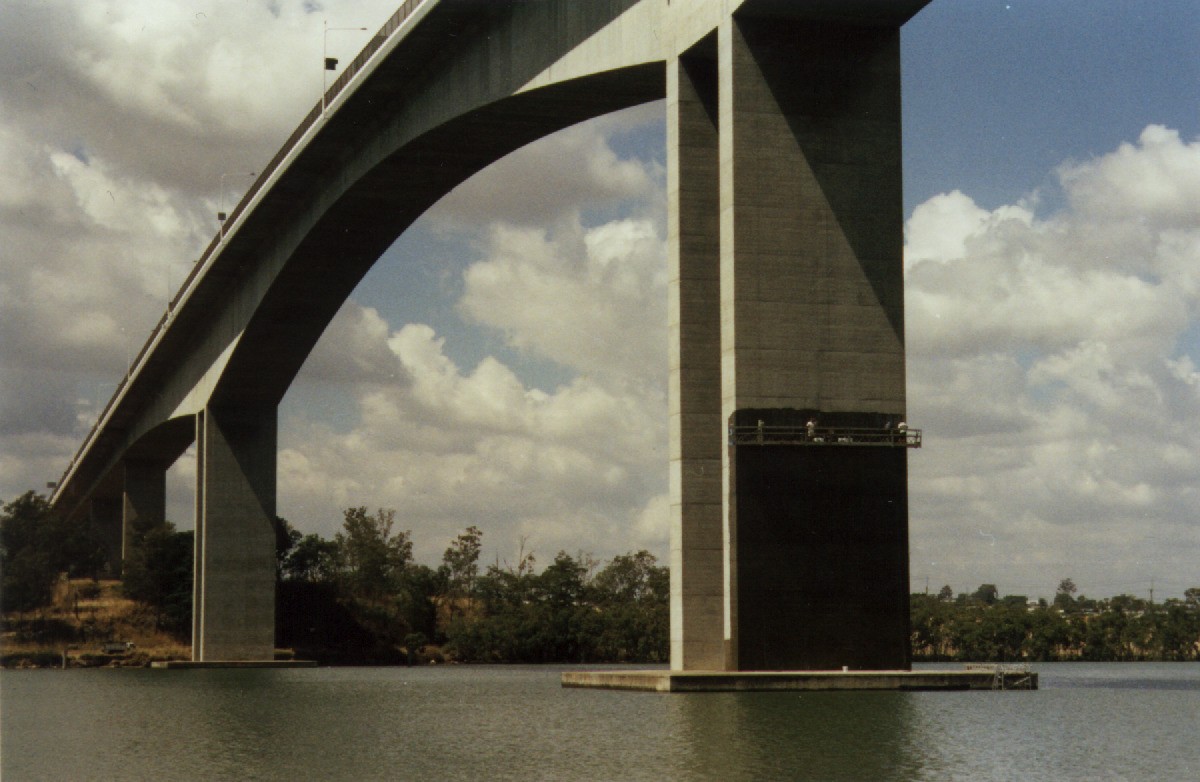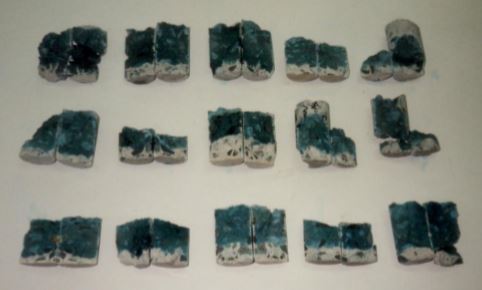Gateway Bridge Queensland

The Gateway Bridge, now known as the Sir Leo Hielscher Bridges, serves as a critical transport artery across the Brisbane River in Queensland. Constructed in 1986 and duplicated in 2010, the bridge continues to connect Brisbane’s northern and southern suburbs, facilitating both commuter and freight movement.
As part of ongoing maintenance and infrastructure resilience planning, the Gateway Bridge Authority engaged Tech-Dry to deliver a concrete protection solution for the bridge’s exposed surfaces.
Following two decades of exposure to heavy traffic and a corrosive marine environment above a saltwater river, the concrete, particularly around the pylons, began showing signs of surface erosion. In response, the Authority launched an investigation and promptly approved the use of a silane-based treatment to prevent further deterioration.

Overview of the Gateway Bridge, Brisbane River in Brisbane, QL
Specifications
Following project specifications and the Authority’s directive, the team impregnated all concrete pylons with a silane product. The treatment covered up to 10,000 square metres of concrete surface. To meet environmental and performance criteria, the silane product required a minimum 80% silane active content. Moreover, the application process prohibited any material from dripping into the river and excluded the use of organic solvents. Consequently, the project mandated a water-based silane formulation.
Tech-Dry Solid Silane met all these requirements. As a water-based silane cream containing 80% silane active and no organic solvents, it adhered well to both vertical and overhead surfaces without run-off. Its extended surface dwell time enabled deeper penetration, making it ideal for the bridge’s structural conditions. A single coat achieved optimal penetration, reducing application time and minimising traffic disruption.
To validate performance, the team conducted a small-scale on-site trial. They extracted concrete cores from treated areas and measured an average penetration depth of 10 mm. Satisfied with the results, the Authority approved full-scale application in 2002. The project progressed in staged phases to ensure consistent quality and was completed in 2006. In total, the team applied approximately 40,000 litres of Tech-Dry Solid Silane across the bridge pylons.
Preparation
Before application, the product arrives as a thixotropic cream with the specified consistency outlined in the product specification. It is applied within the use-by date indicated on the label. During storage, the material remains in a cool, dry location away from direct sunlight. Containers stay sealed until the contents are ready for use.
All concrete surfaces designated for treatment were confirmed to be structurally sound and free from curing compounds, release agents, laitance, coatings, and sealers. No cracks exceeding 0.3 mm were present.
To initiate surface preparation, the concrete was cleaned using a high-pressure water blast combined with a neutral detergent. Immediately after, the surfaces were thoroughly rinsed with a water jet to remove dust, contaminants, and detergent residue.
Following the cleaning process, the surfaces were allowed to dry for up to 24 hours under favourable weather conditions before applying the silane cream.
Application
The silane cream was applied using a Graco 5000 airless paint sprayer. The sprayer operated at minimum pressure with a high flow rate, using a 420 spray tip to prevent the cream from breaking into liquid silane during application.
Upon spraying, the silane cream formed a continuous white thixotropic film across the surface. Gradually, it liquefied into a gel-like silane phase, allowing gradual absorption into the concrete. Wet film thickness was continuously monitored to ensure the correct application rate.
The treated surface required approximately two hours or more to complete absorption. Although the surface remained darker for an extended period, it gradually returned to its original appearance within a few days.
The application rate was carefully maintained between 350–450 ml per square metre. Wet film thickness was measured using a wet film gauge and kept within the specified range of 0.35 to 0.45 mm. The process involved a single coat application only. Throughout the procedure, no material was permitted to drip or run off the surface during silane cream application.
Post Application
The application was performed in dry conditions with the concrete surface temperature not exceeding 35 °C during application. To ensure optimal curing, no application proceeded if rain or extreme weather was forecast within six hours of completing each daily treatment. After curing for a minimum of seven days, the treated surfaces underwent inspection. The water repellent effect was checked to ensure all surfaces were protected by the silane treatment.
To assess penetration performance, concrete cores were extracted from multiple locations along the bridge. These samples confirmed that the silane cream achieved an average penetration depth of 10 mm, in full compliance with the project specifications.
Further Treatment
In line with Gateway Bridge Authority specifications, the bridge undergoes inspection and potential silane re-treatment every 10 years. Accordingly, in 2012, the Authority initiated a follow-up investigation to determine whether additional treatment was necessary, marking a decade since the initial silane application.
As part of the assessment, concrete cores were extracted from multiple locations across the bridge. Subsequent analysis confirmed that the treated concrete retained an average silane penetration depth of 10 mm. Furthermore, no signs of surface erosion or corrosion were detected. The silane impregnation continued to inhibit the absorption of water, chloride ions, and other harmful chemicals, thereby preserving the structural integrity of the concrete.
Given these findings, the Gateway Bridge Authority approved a 10-year postponement of further silane treatment, confident that the original application remained effective.
Average penetration depth of 10mm was achieved for the treated concrete
Delivering Durable Outcomes for Public Assets
The Gateway Bridge upgrade highlights how targeted material protection directly improves the durability and performance of critical infrastructure. By using Tech-Dry’s Solid Silane, the project achieved a robust, non-invasive solution for safeguarding exposed concrete in a high-risk marine environment. This treatment has significantly contributed to the long-term resilience of one of Queensland’s key transport assets.
Engineers, asset managers, and specifiers seeking reliable concrete protection strategies can access Tech-Dry’s tailored solutions for infrastructure-scale applications. To support optimal outcomes, Tech-Dry provides technical guidance across product selection, pilot testing, and application planning.
To learn more about Tech-Dry’s protective technologies for infrastructure contact our team for project-specific guidance.

